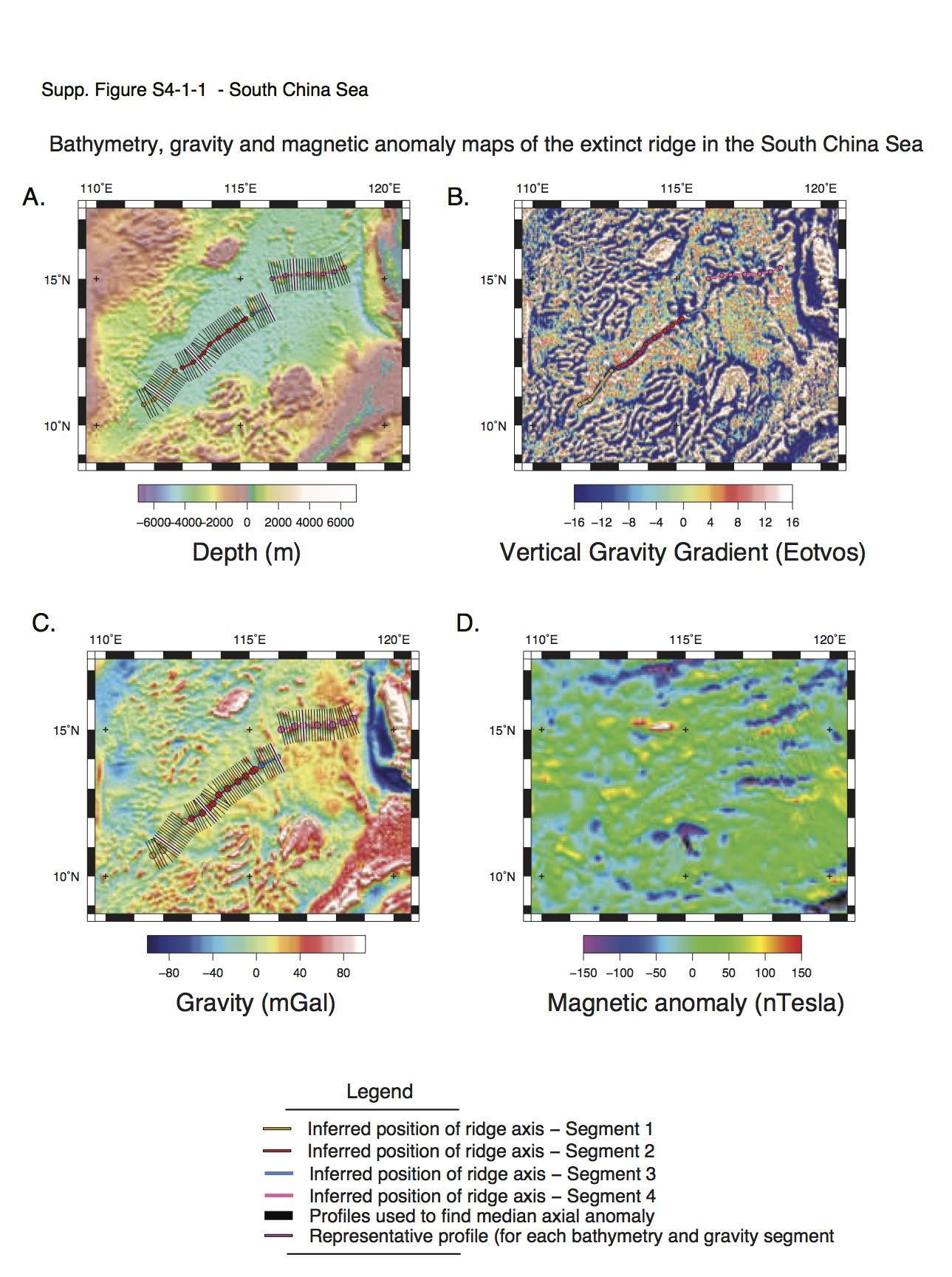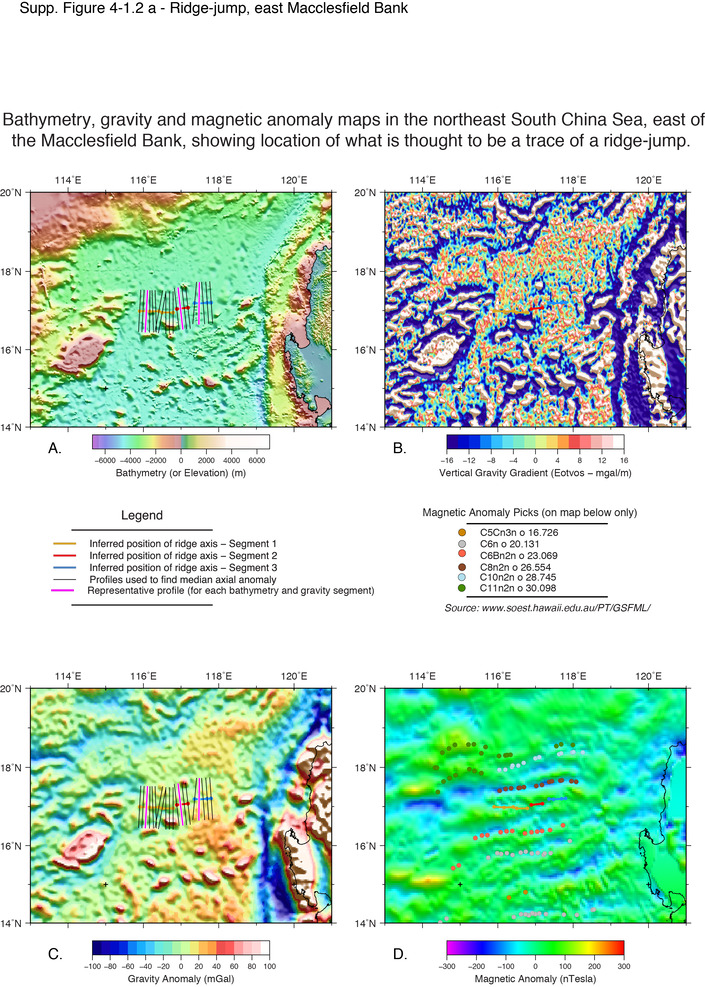| Ocean: | Marginal basin |
| Spreading center type: | Back-arc or intra-oceanic spreading center |
| Time of cessation - South China Sea extinct ridge: | Ca. 15 Ma, C5Cn3n (Briais et al., 1993) |
| Time of cessation - Northern South China Sea early ridge-jump: | Ca. 23 Ma, chron C6B (Briais et al., 1993) |
| Subsequent active spreading center: | None in immediate area |
| Cessation style: | Reported to have been abrupt |
| Later deformation or volcanism: | The eastern-most segment of the extinct ridge is overprinted by an elevated volcanic ridge. |
The South China Sea is an actively studied basin and the extinct ridge within the basin was identified in the early 1970s (Ben-Avraham and Uyeda, 1973). The basin is known to have had a complex opening which has led to a multitude of models for the opening of the basin and cessation of the spreading ridge that were recently reviewed by Barckhausen et al. (2014).
Briais et al. (1993) published a widely accepted interpretation of the magnetic anomalies in the South China Sea and proposed that oceanic spreading in this region may have been synchronous with left-lateral motion on the Red River Fault (Briais et al., 1993; 2016). An earlier ridge-jump is also proposed during the early development of the South China Sea by Briais et al. (1993), and accounts for the observed north to south asymmetry of the basin. The location of the ridge-jump is estimated to be to the east of the Macclesfield Bank, at around 17° N. The location of this possible extinct spreading center is shown in Supp. Figure 4-1.2, as defined by Briais et al. (1993). Limited gravity signal is evident at this location.
There are competing theories regarding the possible cause of cessation of spreading. Briais et al. (1993) suggest that the ridge failed due to changing dynamics of the compressional, escape structures to the west in China, such as the motion of active faults. A recent study alternatively suggested that convergence in the Central Philippines, related to formation of the Borneo wedge, was a factor and that when subduction initiated to the east in the Manila trench, the South China Sea stopped spreading (Franke et al., 2014).
Ben-Avraham, Z. and Uyeda, S., 1973, The evolution of the China Basin and the mesozoic paleogeography of Borneo, Earth and Planetary Science Letters, v. 18, no. 2809, p. 365–376.
Briais, A., Patriat, P. and Tapponnier, P., 1993. Updated Interpretation of Magnetic Anomalies and Seafloor Spreading Stages in the South China Sea: Implications for the Tertiary Tectonics of Southeast Asia, Journal of Geophysical Research, v. 98, no. B4, p. 6299–6328.
Briais, A. and the IODP Expedition 349 Scientists Team, 2016, Implications of IODP Expedition 349 age results for the spreading history of the South China Sea. Geophysical Reserach Abstracts, EGU General Assembly, Vol. 18.
Franke, D., Savva, D., Pubellier, M., Steuer, S., Mouly, B., Auxietre, J.L., Meresse, F. and Chamot-Rooke, N., 2014, The final rifting evolution in the South China Sea, Marine and Petroleum Geology, 58, p. 704-720.





